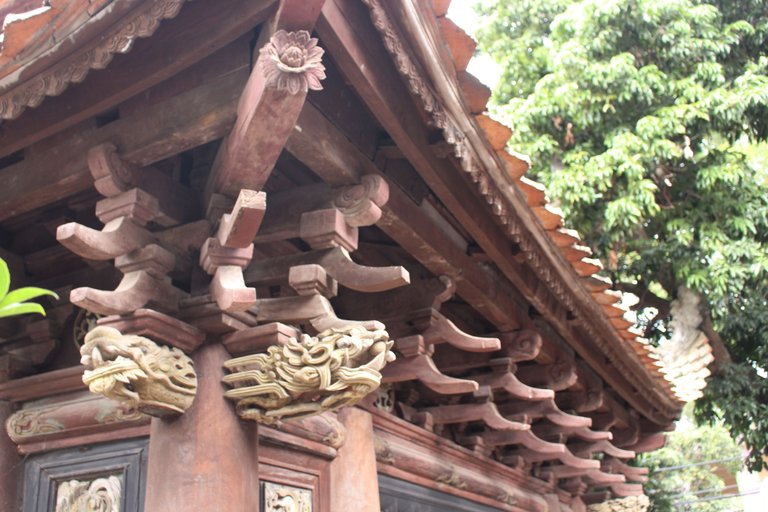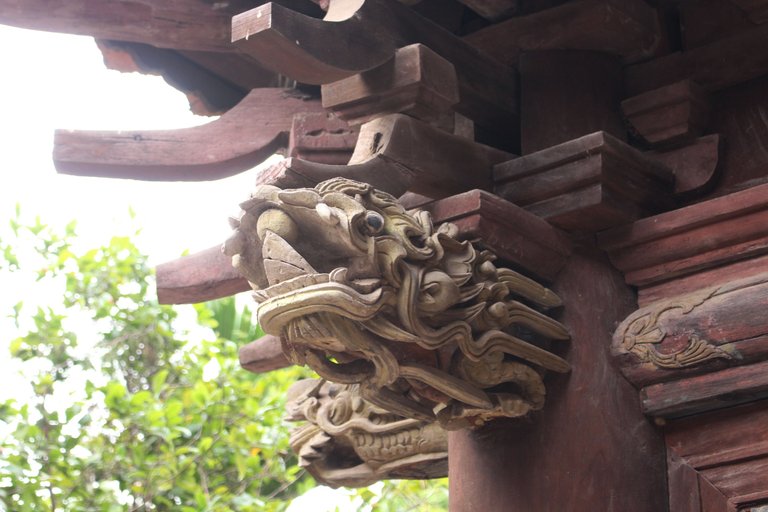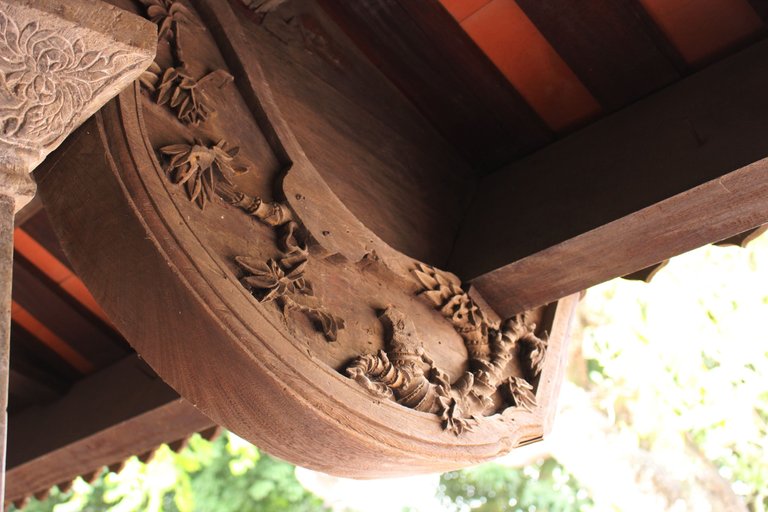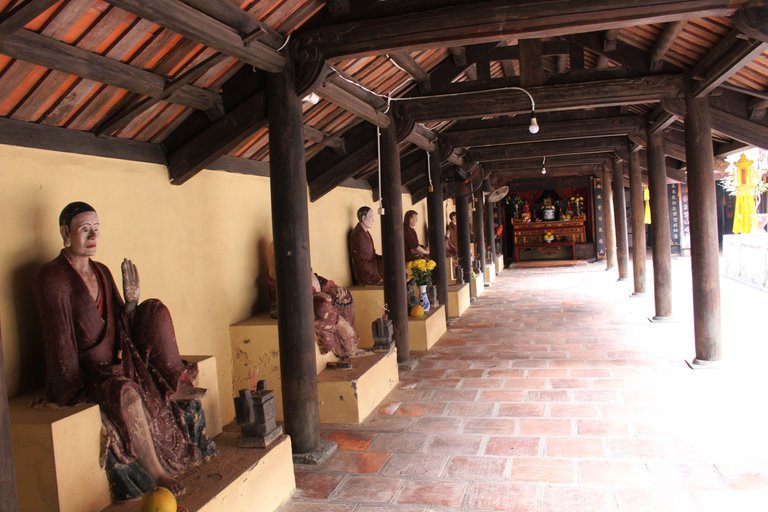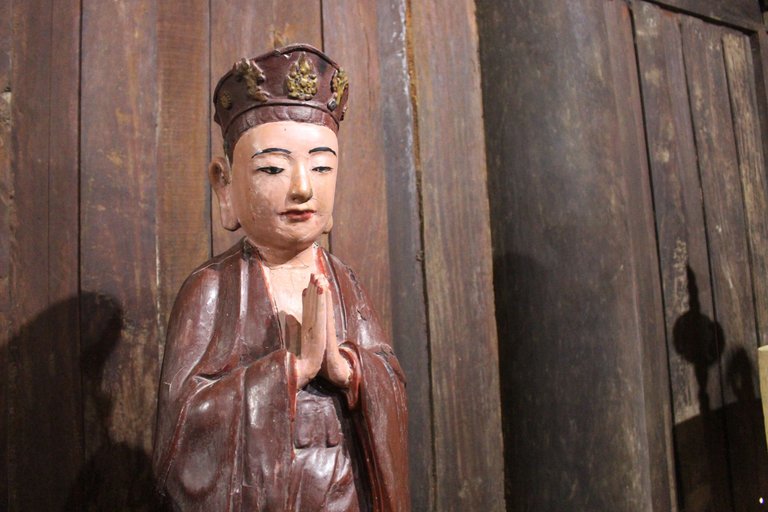We have just celebrated the lunar new year or Tet holiday in Vietnam, this is the most important event for many Vietnamese across the country. People enjoy doing many activities during this time, one of them is visiting pagodas and praying for the best thing in the new year. It has become a custom practiced by many Vietnamese people. This time, I would like to take you to visit a pagoda in Hanoi, the capital city, this is one of the oldest pagodas in the North and we had a chance to learn many interesting stories about this place.

Chùa Bối Khê (Boi Khe pagoda), also known as Đại Bi Tự (Dai Bi pagoda), “Tự” means pagoda.
Where is it?
It is situated in Tam Hung commune, Thanh Oai district, just about 20 km from the city.
The first thing that caught my eye when we arrived was an over 600 hundred-year-old banyan as a local man told us. The tree is quite impressive with its extended branches and deep roots. It really adds an ancient vibe to the surrounding landscape.
Passing a large yard, the next thing before entering the pagoda is the gate. This one is the five-entrance gate which is different from the three-entrance gate we often see in many other pagodas.
On the top of this gate is the bell tower, there are steps from the side that lead to the tower. From the tower, we could admire the amazingly beautiful view of the pagoda and the village.

Connecting to the gate is a small bridge that we had to pass before entering another gate, this one has three entrances. The bridge is also a unique structure that sets it apart from other sites.

When was it built?
Boi Khe pagoda is believed to be built in the Tran dynasty in 1338, this is based on a lot of research about the architecture, treasures, and artifacts that were found at this place.
Worshiping and Architecture
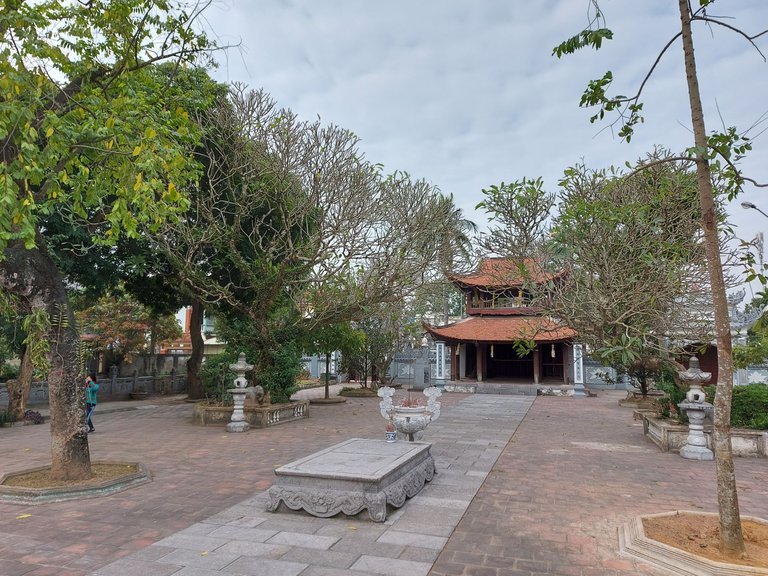
The pagoda worships both Budda and deities, the front altar after passing the three-entrance gate is for Budda and the building in the back worships a deity called “Đức thánh Bối”. Đức Thánh Bối was a local man who helped the Tran dynasty defeat the invaders and later was ordained by the King.

This one is also a special character of Boi Khe pagoda, worshiping both the Budda and deity because typically there is either Budda or Deity in a place of worship.
Đấu củng 斗拱 (Dougong)
a structural element of interlocking wooden brackets source
Evidence of architecture, sculptures, and decoration in different dynasties was found in this pagoda naming the Tran, Le, and Nguyen. This helps me strengthen my view on the necessity of preserving historical and religious sites. The pagoda also has a unique wooden architecture and many antiques of different ages are kept. The back building of the pagoda has a roof structure called “Dougong”. It was originated in China, some archaeological evidence showed that it appeared in our country from the Ly-Tran dynasties. We were fascinated to learn about this structure since it keeps pillars and columns together without cement, glue and whatnot.

Treasure and artifacts
We also came across a great number of ancient statues and treasures. All of them have different characters and are made of different materials.
Even though historical evidence from one place cannot give us a comprehensive view of the history of a period, many pieces of evidence from different places will increase the chance that these pieces of evidence lead to the same conclusion which reveals a clearer picture of the unknown.
Do you agree with me? Do you think it’s critical to preserve these places?
Let me know in the comment.
Photos were taken by me and my friends during our trip.



